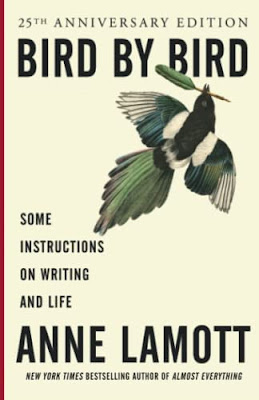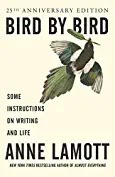The Outline Demystified
by Moira Allen
I don't know any writer who likes the prospect of creating an outline. That's probably because we all remember being taught that horrible "1,2,3 -- A,B,C" format in high school. (Hands up, everyone who used to get around those exercises by writing a paper first, and then creating the outline after the paper was done?) Relax -- I'm not going to "teach" that kind of outline.
An outline is simply a way to construct a road map of where you want to go with your article. Another way to look at an outline is to think of it as a filing cabinet. When you research your article, you're going to gather a lot of information. How will you know what to put in and what to leave out? By creating an "outline" that, in a sense, places "headers" on the files in your cabinet, you'll know whether the information you've gathered fits into the "files" that you have -- or whether it doesn't. If you don't have a "file" for that information, chances are that the information doesn't belong in your article.
For example, when I decided to go "full-time" as a freelancer in 1996, one of the first articles I pitched was a piece on "cancer in cats." I chose to write the article because my own cat had recently died of cancer. When I got the assignment, I roughed out the areas I planned to cover:
- Types of cancer
- Breed-specific cancers
- How to detect cancer
- My experience with a cat with cancer
- Preventing cancer
- Treatments
- Hope for the future
- Hi-tech treatments
- Diagnostic techniques
A quick look at this list showed me that some ideas were actually sub-categories of others. "Breed-specific cancers" fit under "types of cancer," while "diagnostic techniques" fit under "how to detect." "Hope for the future" fit under "treatments." One category also stood out as not fitting with the rest: "My own experience." I ended up with four "file folders" to work with:
- Types of Cancer
- Detecting Cancer
- Treating Cancer
- Preventing Cancer
This, by the way, is an outline. It can be as simple as that. Besides serving as a framework for my article, it provided a framework for my research: I knew what types of questions I had to ask, based on the information I wanted to include. I researched the article on the Web and by interviewing experts, asking questions based on my four topic areas -- and "filing" that information in the appropriate place. If information came in that didn't fit into one of these four areas, I knew that it probably didn't belong in my article.
I also had a slant or "core concept" -- "What you need to know about cancer in cats." (Note how a slant can make a great title: "Is your cat at risk of cancer?" or "How you can reduce your cat's risk of cancer.")
Having that core concept or slant is essential. It tells you what is vital to your article -- what is at the center of your idea -- and what isn't. If you have information or thoughts that don't relate directly to the core concept, then that information probably doesn't belong in the article.
Five Ways to Approach the Outline
I'm no fan of the "1,2,3 -- A,B,C" approach to outlines. This approach tends to get one bogged down in the mechanics -- Is this a subset of #2? Should I move this section here? There are easier ways to put your ideas and information in order.
1) Ask yourself what questions a reader would ask. What would a reader want to know about this subject? Make a list of those questions. For example, a reader interested in cancer in cats might want to know:
- How common is cancer in cats?
- What kinds of cancer affect cats?
- What cats are at greatest risk?
- How can I tell if my cat has cancer?
- What can I do if my cat has cancer?
- What kinds of treatments are available to me?
- What are their success rates?
- What are their risks to my cat?
- How long will my cat live if it has cancer?
- Can I prevent my cat from getting cancer?
- Where do I go to get more help?
Sometimes, simply jotting down a list of questions is all you need to define the basic areas your article will cover, and even the order in which you might wish to cover them.
2) Think in "subheads." Most published articles are divided into sections with subheads. This is a good way to organize your information (and putting in your own subheads always pleases an editor). The four "file folders" that I developed for my feline cancer piece would also serve very nicely as subheads:
- Is your cat at risk?
- Protecting your cat from cancer
- Detecting the signs of cancer
- Choosing a treatment plan
Subheads help you organize your information logically. You'll also be able to determine whether your article is "in balance." If you have 250 words under one subhead and 1000 under another, chances are you need to reorganize the article.
3) List events or concepts chronologically. What happened first? What happened next? What happened after that? What happened last? This approach works well for an article that focuses on events that occurred over time -- e.g., a historical piece, a personal profile, etc. For example, women's magazines often publish stories of how a family coped with a child's illness. A chronological outline of such an article might look like this:
- Family notices something isn't right with the child
- Family goes to traditional doctor
- Family gets reassurances, goes home
- Child gets worse
- Family seeks more help; gets more reassurances
- Child gets worse
- Family gets desperate; seeks more information
- Family finds special doctor/support group/information on line
- Family locates specialist/special treatment/new cure
- Family is warned of risks of treatment
- Family goes ahead with treatment
- Child gets better
4) List points in logical order. Many how-to articles have an obvious logical order: Do this first, do this next, do this next, and do this last. Your outline here may consist simply of a list of things to do, and the order in which the reader should do them. This works well for a how-to article, for example.
A travel article might also have a logical order, based on the order in which one would see or visit a location. If, for example, you'd start at Point A and travel to Point X, a logical way to present your information is in the order in which the traveler following your route would encounter it. This works even for a single location: Trace the route a traveler would take if walking through a site, such as a castle or museum.
5) Make a list. List all the pieces of information that you'd like to include in the article. Then, go over that list and assign numbers to each item based on its importance or priority. For example, if you're writing a piece on ways to improve communication between spouses, jot down a list of all the suggestions you want to cover. Which tips are most important? Which are less important? Which could be omitted without any real harm to your article? You may find, when you're done, that you have a selection of key points, and perhaps a few "leftovers" that aren't as useful. In some cases, your list may become the actual structure of your finished article ("Five ways to improve communication with your spouse"); in others, it may become the "hidden" structure that underlies your piece, even though you aren't numbering the points in the final article.
Once you've mastered a few alternatives to the classic, hated approach to outlines, you'll find that organizing your material -- and your article -- is even easier than A,B,C!
Excerpted from "Starting Your Career as a Freelance Writer."
Copyright © 2003 Moira Allen.
About the Author
Moira Allen is the editor of Writing-World.com, and has written nearly 400 articles, serving as a columnist and regular contributor for such publications as The Writer, Entrepreneur, Writer's Digest, and Byline. An award-winning writer, Allen is the author of eight books, including Starting Your Career as a Freelance Writer, The Writer's Guide to Queries, Pitches and Proposals, and Writing to Win: The Colossal Guide to Writing Contests. In addition to Writing-World.com, Allen hosts VictorianVoices.net, a growing archive of articles from Victorian periodicals, and The Pet Loss Support Page, a resource for grieving pet owners. She lives in Maryland with her husband and the obligatory writer's cat.
Moira Allen Books at Amazon





